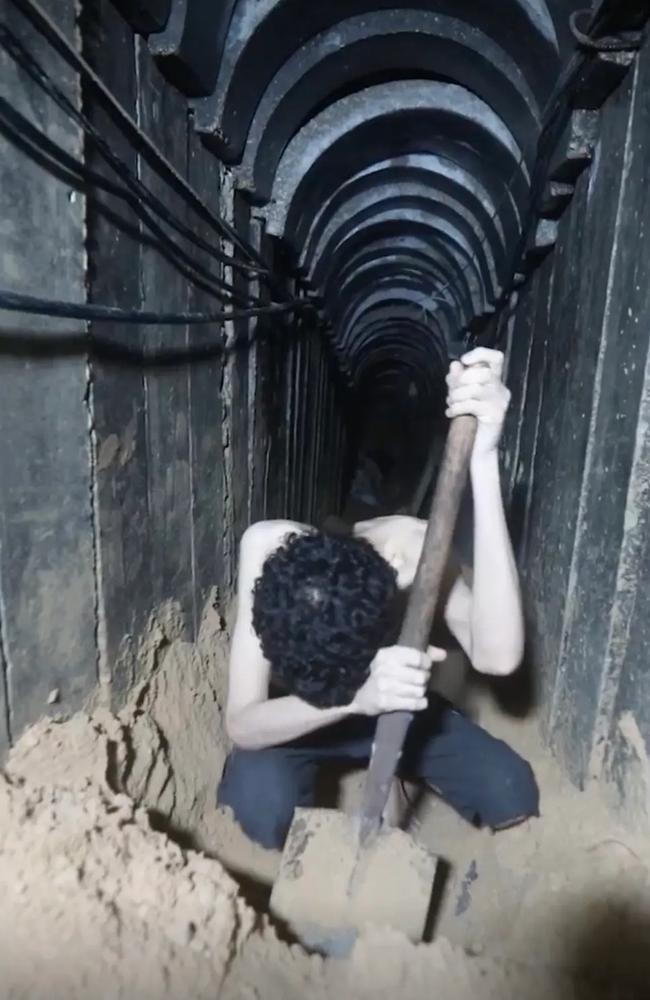A harrowing video released by Hamas over the weekend showing emaciated Israeli hostage Evyatar David, 24, has stirred anguish and fury across Israel while prompting little reaction from the international press or global leadership.
The footage, showing David skeletal and visibly weak as he digs what he describes as his own grave in a Hamas tunnel, was described by Israeli commentators as a psychological weapon in a renewed propaganda campaign by the terror group. “Time is running out,” David says to the camera, fighting back tears. “You are the only ones who can end this.”
His message, however, found limited international visibility. A survey of hundreds of front pages worldwide by the Freedom Forum revealed that only four newspapers all Israeli featured the image. Outside of the New York Post, no major U.S. or international outlets placed the story prominently.
Observers say the timing of the video release was strategic, even as it showcased Hamas’s cruelty. Militarily weakened and increasingly unpopular among Gazans themselves, Hamas appears to be shifting its strategy to the one battlefield where it still holds power: global opinion.
Turning Sympathy Into Leverage
Hamas’s understanding of mass psychology and media optics has long shaped its wartime communications. Despite mounting losses and declining support in Gaza with recent polls showing only 37% of Gazans now approve of the October 7 attacks, down from 71% in March the group has effectively weaponized humanitarian imagery to shift international focus.
Experts say Hamas released the David footage now to drive Israeli despair and stoke internal pressure on the Netanyahu government to reach a deal at any cost including potential concessions on hostage release or territorial governance.
“They are starving him deliberately, systematically using his agonizing suffering as a twisted tool for their depraved propaganda,” said Ilay David, Evyatar’s brother, speaking at Tel Aviv’s Hostage Square protest.
Yediot Ahronoth’s veteran military correspondent Ron Ben-Yishai compared the condition of the hostages to Holocaust-era Muselmänner describing the video as a turning point. “The situation demands an immediate shift in Israel’s national priorities and an urgent act of rescue,” he wrote.
Muted Global Response Raises Questions
In stark contrast, the international reaction has been subdued. While major outlets mentioned the video, few emphasized it. No Western leader convened a press conference or demanded action, unlike previous global reactions to Gaza images.
Critics argue the selective outrage reflects the success of Hamas’s narrative. “They haven’t just taken Israelis captive, they’ve taken your minds hostage too,” wrote Iranian human rights activist Elica Le Bon. “We’ve been dehumanized just as they planned all along.”
Meanwhile, as Israel faces rising international isolation with polls indicating two-thirds of Israelis fear global abandonment Hamas seems to be capitalizing on the emotional fatigue of the Israeli public. This dual-track campaign of psychological pressure at home and manipulation abroad has proven effective.
Shifting Ground
On the diplomatic front, Hamas officials are already framing the surge in recognition of Palestinian statehood by several Western countries as “fruits of October 7.” Yet within the Arab world, calls are growing for Hamas to relinquish control of Gaza altogether. The Arab League recently endorsed a proposal demanding the group hand over weapons to the Palestinian Authority in pursuit of a ceasefire.
For now, however, Hamas is betting that emotional imagery will move the needle faster than political negotiation. The image of Evyatar David his frail body, shovel in hand may be its most calculated and tragic gambit yet.
Credit: Avi Mayar


